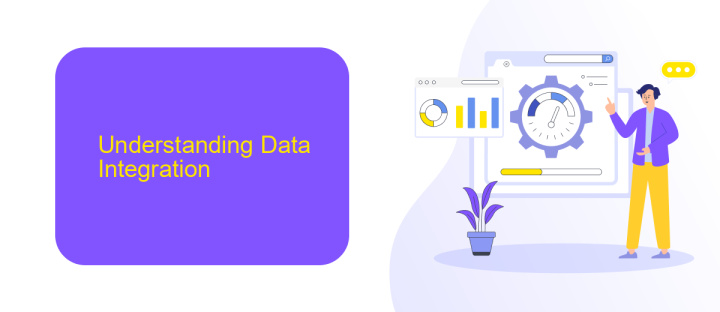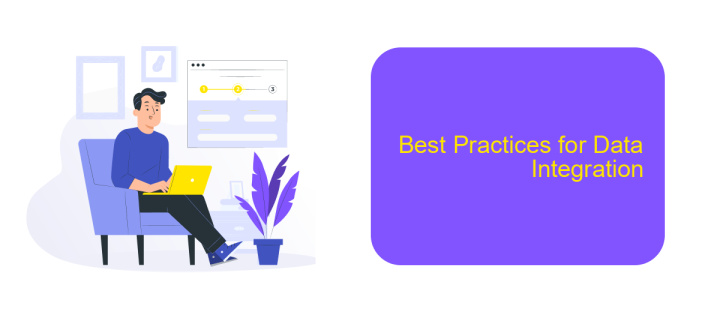Data Integration Guide
In today's data-driven world, seamless integration of diverse data sources is crucial for informed decision-making and operational efficiency. This Data Integration Guide provides comprehensive insights into the methodologies, tools, and best practices essential for combining data from various platforms, ensuring consistency, accuracy, and accessibility. Whether you're a data engineer or a business analyst, this guide is designed to enhance your data integration capabilities.
Introduction
Data integration is a critical process for businesses aiming to consolidate information from diverse sources into a unified view. This process not only enhances decision-making but also streamlines operations and boosts overall efficiency. As organizations increasingly rely on various data sources, the need for seamless integration becomes paramount.
- Combines data from multiple sources
- Enhances data accuracy and consistency
- Facilitates real-time data access
- Improves decision-making processes
- Streamlines business operations
To achieve effective data integration, leveraging specialized tools and services is essential. One such service is ApiX-Drive, which simplifies the integration process by offering a user-friendly platform to connect various applications and data sources. With ApiX-Drive, businesses can automate data flows, reduce manual intervention, and ensure that all data is up-to-date and accessible in real-time. This enables organizations to focus more on strategic tasks rather than getting bogged down by technical challenges.
Understanding Data Integration

Data integration is the process of combining data from different sources to provide a unified view. It is essential for businesses that need to consolidate information from various databases, applications, and systems to make informed decisions. Effective data integration ensures data consistency, reduces redundancy, and enhances the quality of information available for analysis. The process typically involves data extraction, transformation, and loading (ETL), where data is extracted from source systems, transformed to fit the desired format, and loaded into a target system, such as a data warehouse.
There are various tools and services available to facilitate data integration. One such service is ApiX-Drive, which simplifies the integration process by providing a user-friendly interface and pre-built connectors for numerous applications and databases. ApiX-Drive allows users to automate data transfers and synchronize information across different platforms without requiring extensive coding knowledge. This not only saves time but also reduces the risk of errors, ensuring that businesses can rely on accurate and up-to-date data for their operations. By leveraging tools like ApiX-Drive, organizations can streamline their data integration efforts and focus on deriving valuable insights from their consolidated data.
Data Integration Tools and Techniques

Data integration is a critical component for modern businesses, enabling seamless data flow between various systems and applications. Effective integration tools and techniques can significantly enhance data accuracy, reduce redundancy, and streamline operations.
- ETL (Extract, Transform, Load) Tools: These tools are essential for extracting data from different sources, transforming it into a suitable format, and loading it into a target system. Examples include Apache Nifi and Talend.
- Data Integration Platforms: Platforms like ApiX-Drive simplify the process by offering pre-built connectors and user-friendly interfaces. They enable quick setup and management of integrations without extensive coding.
- API Management: APIs facilitate communication between systems. Tools like Postman and ApiX-Drive's API management features help in creating, testing, and monitoring APIs efficiently.
- Data Virtualization: This technique allows users to access and manipulate data without requiring physical data movement. Tools like Denodo and Red Hat JBoss Data Virtualization are prominent in this space.
Choosing the right tools and techniques for data integration depends on your specific business needs and technical requirements. Platforms like ApiX-Drive offer versatile solutions that can cater to various integration scenarios, ensuring seamless data flow and improved operational efficiency.
Best Practices for Data Integration

Effective data integration is crucial for ensuring seamless data flow across various systems and applications. To achieve this, it's important to follow best practices that enhance the reliability and efficiency of your data integration processes. First, always start with a clear understanding of your data sources and the specific requirements of your integration project.
Next, prioritize data quality by implementing robust data validation checks and cleansing mechanisms. This will help in maintaining the integrity of your data as it moves between systems. Additionally, consider using automated tools like ApiX-Drive, which can simplify the integration process by providing pre-built connectors and user-friendly interfaces.
- Define clear objectives and scope for your data integration project.
- Ensure data consistency and accuracy through regular audits and validations.
- Leverage automated tools like ApiX-Drive for efficient and scalable integrations.
- Maintain thorough documentation for all integration processes and configurations.
Finally, always monitor and optimize your data integration workflows. Regularly review performance metrics and make necessary adjustments to address any bottlenecks or issues. By adhering to these best practices, you can ensure a smooth and effective data integration process that supports your business objectives.
Future Trends in Data Integration
As data integration continues to evolve, several emerging trends are shaping its future. One significant trend is the increasing adoption of artificial intelligence and machine learning to automate and optimize data integration processes. These technologies can enhance data quality, reduce manual intervention, and provide predictive analytics, making data integration more efficient and insightful. Additionally, the rise of cloud-native data integration platforms is enabling organizations to seamlessly integrate data across various cloud services, ensuring scalability and flexibility.
Another key trend is the growing importance of real-time data integration, driven by the need for immediate insights and decision-making. Tools like ApiX-Drive are becoming essential, as they offer user-friendly interfaces and robust capabilities for setting up and managing integrations without extensive technical knowledge. Furthermore, the emphasis on data governance and privacy is leading to the development of more secure and compliant data integration solutions. As organizations navigate complex data landscapes, these trends will play a crucial role in shaping the future of data integration.
FAQ
What is data integration?
Why is data integration important for businesses?
What are the common challenges in data integration?
How can businesses automate data integration processes?
What are the key features to look for in a data integration tool?
Time is the most valuable resource in today's business realities. By eliminating the routine from work processes, you will get more opportunities to implement the most daring plans and ideas. Choose – you can continue to waste time, money and nerves on inefficient solutions, or you can use ApiX-Drive, automating work processes and achieving results with minimal investment of money, effort and human resources.

